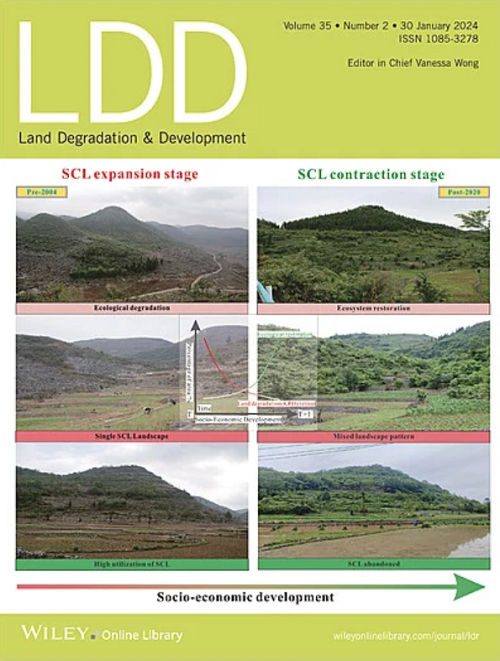Assembly Processes Underlying Biotic Homogenization of Soil Microbial Communities in an Urban Ecosystem
IF 3.6
2区 农林科学
Q2 ENVIRONMENTAL SCIENCES
引用次数: 0
Abstract
Urbanization is known to cause biotic homogenization, but the processes controlling biotic homogenization are not well understood. Here, we analyzed microbial communities from 258 soil samples covering the large landscape heterogeneity of the entire Shanghai megacity. We measured the urbanization intensity by incorporating habitat fragmentation, connectivity, and distance to the city center. We determined the extent to which bacterial and fungal community composition varied with urbanization intensity and how different assembly processes contributed to the variations. We found significantly positive effects of urbanization on the compositional homogenization of bacteria and fungi, and the proportions of generalists and specialists were significantly related to homogenization. Dispersal and ecological drift explained at least 60% of bacterial and fungal compositional variations, with increased influences of dispersal and ecological drift reducing the specialists. Environmental variables explained < 28% of compositional variations, and higher urbanization intensity led to a simplified co‐occurrence network and an increased proportion of generalists in the network. These results indicate that dispersal and ecological drift homogenized soil microbial communities in the city by shifting the proportions of generalist and specialist microbes, with weak effects from environmental selection. Therefore, to conserve urban biodiversity and ecosystem functioning in the face of complex human impacts, management strategies should consider not only environmental conditions but also influences of dispersal and drift, as well as species habitat preferences, to increase the effectiveness of management actions.城市生态系统中土壤微生物群落生物同质化的组装过程
众所周知,城市化会导致生物同质化,但控制生物同质化的过程尚不清楚。在此,我们分析了覆盖整个上海特大城市景观异质性的258个土壤样品的微生物群落。我们通过结合栖息地破碎度、连通性和到城市中心的距离来衡量城市化强度。我们确定了细菌和真菌群落组成随城市化强度变化的程度,以及不同的组装过程如何导致这种变化。我们发现城市化对细菌和真菌的组成均质化有显著的正向影响,通才和专才的比例与均质化显著相关。扩散和生态漂移解释了至少60%的细菌和真菌组成变化,扩散和生态漂移的影响增加减少了专家。解释环境变量<;28%的组成变化和较高的城市化强度导致共现网络的简化和网络中通才比例的增加。这些结果表明,扩散和生态漂移通过改变多面手和专门手微生物的比例使城市土壤微生物群落同质化,环境选择的影响较弱。因此,为了在复杂的人类影响下保护城市生物多样性和生态系统功能,管理策略不仅要考虑环境条件,还要考虑扩散和漂移的影响,以及物种栖息地偏好,以提高管理行动的有效性。
本文章由计算机程序翻译,如有差异,请以英文原文为准。
求助全文
约1分钟内获得全文
求助全文
来源期刊

Land Degradation & Development
农林科学-环境科学
CiteScore
7.70
自引率
8.50%
发文量
379
审稿时长
5.5 months
期刊介绍:
Land Degradation & Development is an international journal which seeks to promote rational study of the recognition, monitoring, control and rehabilitation of degradation in terrestrial environments. The journal focuses on:
- what land degradation is;
- what causes land degradation;
- the impacts of land degradation
- the scale of land degradation;
- the history, current status or future trends of land degradation;
- avoidance, mitigation and control of land degradation;
- remedial actions to rehabilitate or restore degraded land;
- sustainable land management.
 求助内容:
求助内容: 应助结果提醒方式:
应助结果提醒方式:


